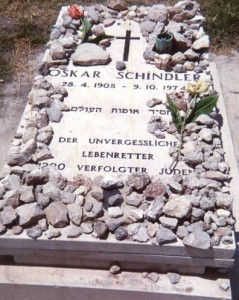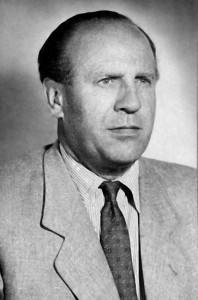“Hero” and “Nazi” are not common words used to describe the same person. Normally, they are in opposition to one another; the hero fights the Nazis, or the Nazis fight the hero. However, for one man, he was both hero and Nazi. His name was Oskar Schindler.
When Schindler was a young man he attended numerous trade schools and eventually married his wife Emilie when he was 20, shortly before Hitler began his rise to power. Schindler was Catholic and an ethnic German, and he was a successful businessman. In 1939, after the German annexation of the Sudetenland, he joined the Nazi party.
Schindler took advantage of the German occupation program to remove Jewish business owners and bought Rekord Ltd., which had been a Jewish-owned enamelware manufacturer. Because he was a successful businessman, a wartime veteran, and a member of the Nazi party, Schindler seemed an unlikely candidate to emerge as a hero to over a thousand Jews.
At first, he was playing the war and the holocaust to his advantage. It wasn’t long before this practice started weighing on his conscience, and he quickly began using his advantageous position to help Jews. He employed over 1000 Jewish forced laborers who lived in the nearby Krakow ghetto, and he intervened numerous times on their behalf with higher authorities. He not only assisted Jews on an individual basis, he took steps to prevent workers from being sent to harsher camps. His involvement as a wartime rescuer then began its steep ascent.
Jews on an individual basis, he took steps to prevent workers from being sent to harsher camps. His involvement as a wartime rescuer then began its steep ascent.
In 1943 the Krakow ghetto was liquidated and the workers were all relocated to the nearby labor camp Plaszow, which was then converted to a concentration camp. Schindler allowed his workers to stay overnight at his factory, along with another 450 workers from other factories. This brought him under suspicion and he was arrested on several different occasions. But the Germans were unable to charge him successfully.
Unfortunately, the SS moved his Jews to Plaszow anyway in 1944. Afterward he went on to establish his own “labor camp” that he used to produce armaments. He declared it essential to the war effort, allowing him to save 800 Jewish men and 400 Jewish women from Auschwitz. Over a long period of time his “factory” was able to produce only one shipment of live ammunition. His camp was finally liberated on May 9th, 1945, when the Soviets arrived. By this time Schindler was essentially penniless, having spent all of his fortune on bribes and other things to keep his Jews safe.
Even though Schindler did not begin his journey as a hero, by the time the war was over he fulfilled every one of the Great Eight characteristics of heroes: he was smart, strong, resilient, selfless, caring, charismatic, reliable, and inspiring. He used his cunning to bend the system to help him and his Jews; he was strong in the face of numerous arrests; and he place the well-being of Jews above his own well-being.
Although he was not well known at the time of his death, Oskar Schindler has become a source of inspiration to millions around the world. He has also been a recipient of many medals of honor. Schindler is the only Nazi with an honorary burial in a cemetery in Jerusalem. A true hero, he is credited with saving the lives of 1,200 human beings.
– – – – – – – – – – – – – – – – – – – –
